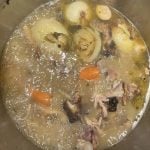Dear TEAM: I was wondering if you have recipes for wheat-free, gluten-free bread, cookies or cake. I have been diagnosed with this problem and find it difficult to find these products, which are often expensive. C.B., Cloverdale, B.C.
Dear C.B.: I have sent you recipes for cheese bread, muffins, wheat-free rice crust pizza and chocolate cookies and cake previously published in our articles. As well, here is an easy peanut butter cookie recipe with no flour.
Peanut butter cookies
1/2 cup white sugar 250 mL
Read Also

Southern Alberta receives needed moisture
Canadian Drought Monitor Report for July shows severe drought continuing to grip farmers in Alberta and the Prairies
1/2 cup brown sugar 250 mL
1 egg
1 cup peanut butter, crunchy 250 mL
Mix ingredients together. Roll in sugar. Crisscross with fork. Bake at 350 F (180 C)for 10-12 minutes.
Celiac disease
According to the Canadian Celiac Association at www.celiac.ca, about one in133 persons in Canada are affected by celiac disease, compared to one in 200 10 years ago. People with the disease require a gluten-free diet, since gluten damages the absorptive surface of the small intestine, making it difficult for the body to absorb protein, fat, carbohydrates, vitamins and minerals necessary for good health.
Common symptoms are anemia, chronic diarrhea, weight loss, fatigue, cramps, abdominal pain, gas and bloating, depression and irritability and muscle and skeletal aches and pains. In other cases, sufferers develop an intense burning and itching rash called dermatitis herpetiformis.
Gluten is a protein found in wheat, rye, triticale and barley. Gliadin, the gluten in wheat flour that helps bread and other baked goods bind and prevents crumbling, is widely used in the production of many processed and packaged foods.
Take care when selecting soups, bouillon cubes, gravy bases, Worcestershire sauce, soya sauce, baking powder, salad dressings, seasonings, luncheon meats, sausages and processed foods. Other hidden sources of gluten are hydrolyzed vegetable protein, hydrolyzed plant protein, malt or malt flavouring, modified wheat starch or other unidentified food starch. Read the label ingredients to ensure no gluten content.
People with celiac disease can usually tolerate rice, corn, buckwheat, potatoes, soy, tapioca and pulses. Pulse crops such as peas, lentils and beans are a healthy option and a source of fibre, protein, iron and other minerals and vitamins. Pulses help to address iron deficiency anemia and constipation common to celiacs.
Allergy alerts
Consumption of some products can cause a serious reaction in those sensitive to gluten or a life-threatening reaction in people with allergies to wheat proteins.
For information on wheat, one of the nine most common food allergens, visit www.inspection.gc.ca/english/fssa/labeti/allerg/wheblee.shtml.
To get information on recalls by e-mail or for food safety facts, visit www.inspection.gc.ca or call the Canadian Food Inspection Agency at 800-442-2342 or 800-465-7735.
Gluten-free oat products
Tilly Wiens, manager of marketing and sales for FarmPure Foods, said her company processes and markets gluten-free oat products such as flakes and flour, and mixes for cookies and muffins. Visit www.onlyoats.ca.
Gluten-free recipes
Gluten Free Diet by Shelley Case is a great resource. A registered dietitian, Case is a leading international nutrition expert on celiac disease and the gluten-free diet. Visit www.glutenfreediet.ca.
Carol Fenster, author of Gluten-Free Quick and Easy, 1,000 Gluten-free Recipes, Cooking Free (a comprehensive cookbook for those who avoid gluten, dairy, and eggs) and Gluten-free 101 (basic dishes for beginners) are available at www.savorypalate.com.
One of our harvest workers requires a gluten-free diet. Shortcuts, tips and time-saving techniques are helpful when cooking gluten-free.
- Minimize ingredients: Salsa is packed with flavour and replaces multiple ingredients of tomatoes, chilis, salt, oregano, cilantro, etc. You can have a really quick soup using canned black beans, salsa and a little broth or water.
- Minimize effort: Mix up a homemade gluten-free flour blend from sorghum flour, potato starch and tapioca flour. It can be used in sandwich bread, pizza, breadsticks and dinner rolls.
You can also prepare cake mixes ahead of time or prepare quick bread, muffin mixes or pancake or waffle mixes. Minimize efforts by using a food processor to blend your cookie dough. You can grind the nuts in the food processor, add the remaining ingredients and quickly blend the cake batter.
- Maximize meals: Turn leftovers into tomorrow’s lunch or next week’s dinner. Cook a roast chicken and use the bones for chicken broth, the chunks of meat for a chicken casserole and any remaining meat for chicken salad sandwiches. Cook extra pork tenderloins one night, cut leftovers into cubes, freeze and use for sweet-and-sour pork a few meals later.
Chop vegetables, including onions, and freeze the portion you don’t need. Pre-cook lentils and freeze in containers for future use.
Personalized family cookbook
Celiac disease runs in families. You have a 40 to 60 percent chance of developing the disease if immediate family members have it and a 10 to 20 percent chance if secondary relatives have celiac.
Nancy Radcliffe Edwards has developed an indexed book, With Love From My Kitchen, for people to create their own cookbook, with 264 blank pages divided into a meal planning order. Fill in with your favourite recipes, cooking hints and secrets and heirloom treasures of good eating. Order from www.amazon.com.
Revenue Canada
Persons who suffer from celiac disease are entitled to claim the incremental costs of purchasing gluten-free products as a medical expense. For more information, contact the Canada Revenue Agency or visit www.cra-arc.gc.ca/tx/ndvdls/tpcs/clc-eng.html.
Farm and Home Safety Contest
A farm is a dangerous place to live and work and there are always things that can be done to make a home safer. What have you done to make your farm or home safer? We would like to hear from you. Send us your innovative ideas or a story about how your safety precautions made a difference.
Please send them to TEAM Resources at The Western Producer, Box 2500, Saskatoon, Sask., S7K 2C4 or team@producer.com by Oct. 15. We will review them and present prizes for the best safety idea or steps taken.
Barbara Sanderson is a home economist from Rosetown, Sask., and one of four columnists comprising Team Resources. Send correspondence in care of this newspaper, Box 2500, Saskatoon, Sask., S7K 2C4 or contact them at team@producer.com.














